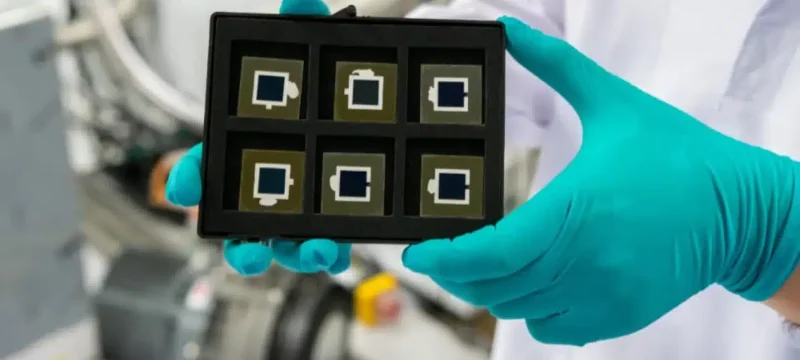The National University of Singapore’s scientists have introduced a remarkable advancement in solar cell technology by unveiling a novel triple-junction perovskite/Si tandem solar cell with a certified world-record power conversion efficiency of 27.1 percent across a 1-square-centimeter solar energy absorption area. This breakthrough, published in the prestigious journal Nature, marks a significant milestone in solar energy research.
At the heart of this achievement lies the development of a new cyanate-integrated perovskite solar cell engineered for stability and energy efficiency. Led by Assistant Professor Hou Yi, the research team from the NUS College of Design and Engineering and the Solar Energy Research Institute of Singapore (SERIS) embarked on a mission to revolutionize solar cell design. Their pioneering approach involved integrating cyanate into the perovskite solar cell, resulting in a cutting-edge triple-junction perovskite/Si tandem solar cell.
Also Read: New Solar Panel Material Boosts Electricity Output by 190%
The successful integration of cyanate into the perovskite solar cell has led to a significant improvement in performance, surpassing that of comparable multi-junction solar cells. By fine-tuning the components of the perovskite structure, researchers achieved both an ultrawide energy range and high efficiency, addressing previous challenges encountered in perovskite-based solar cells.
In addition to enhancing solar cell efficiency, the cyanate-integrated perovskite solar cell demonstrated improved voltage output and remarkable stability. Rigorous testing confirmed its stability, with the solar cell retaining over 96 percent of its capacity after continuous operation for 300 hours.
Building upon this success, the researchers integrated the cyanate-integrated perovskite solar cells into a triple-junction perovskite/Si tandem solar cell, achieving a certified world-record efficiency of 27.1 percent. This milestone underscores the potential of perovskite-based triple-junction solar technology in advancing sustainable and renewable energy sources.
Looking ahead, the research team aims to scale up the technology to larger modules while maintaining efficiency and stability. Future research will focus on innovations at perovskite interfaces and compositions, laying the foundation for further advancements in solar energy technology.
While this achievement represents a significant step forward in solar cell advancement, challenges such as cost-effectiveness, vulnerability, and intermittency still need to be addressed. Nevertheless, the unprecedented efficiency and stability of the triple-junction perovskite/Si tandem solar cell offer immense promise for the future of solar energy.





